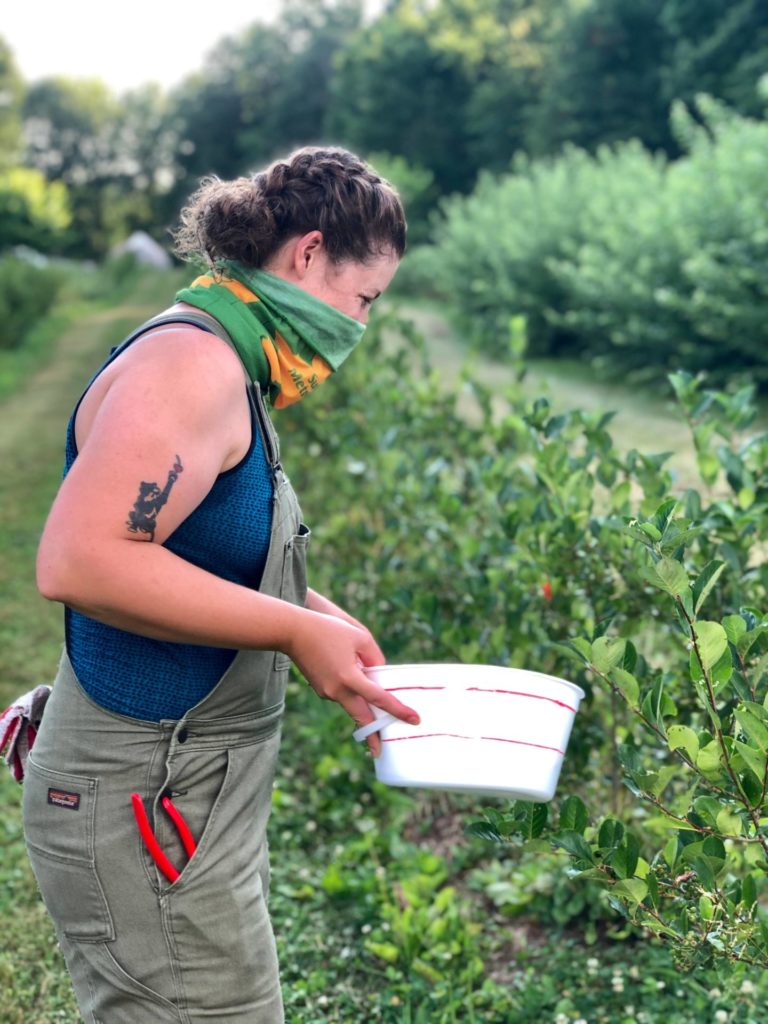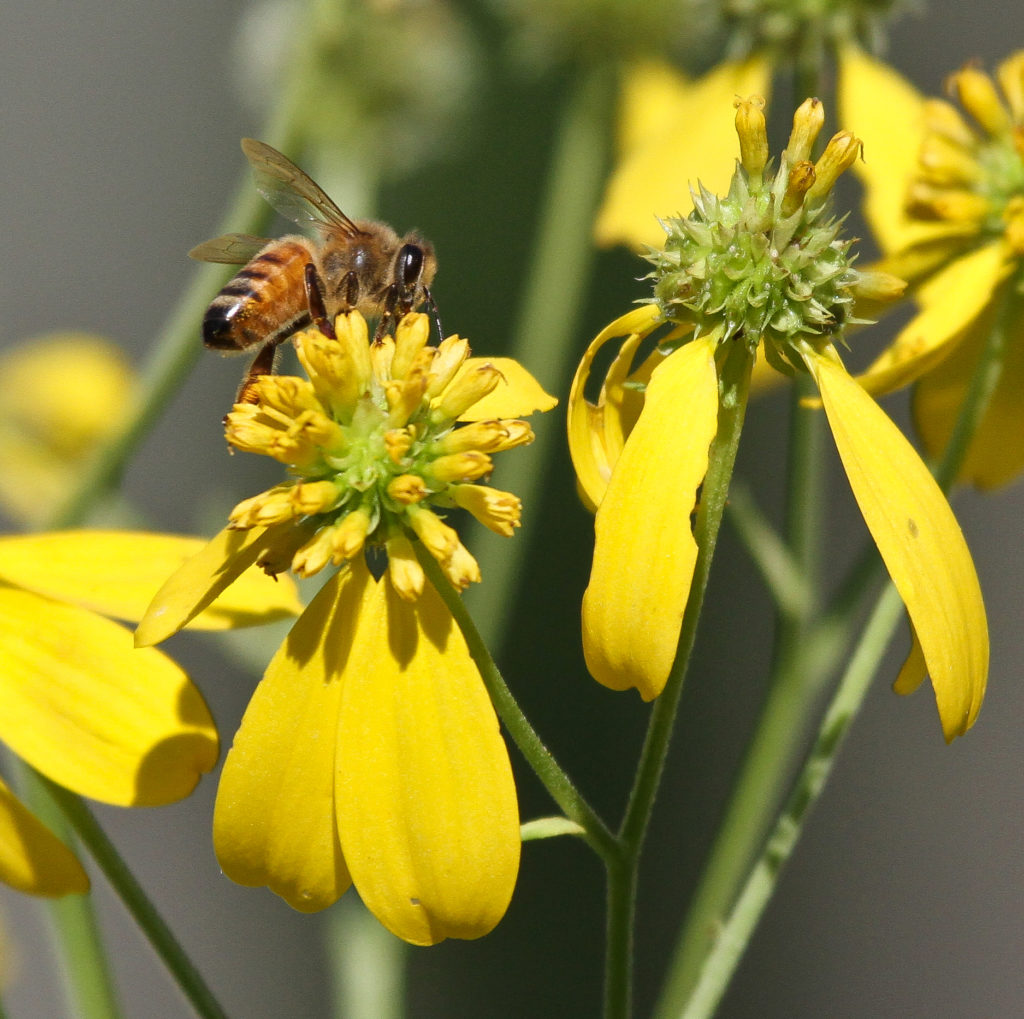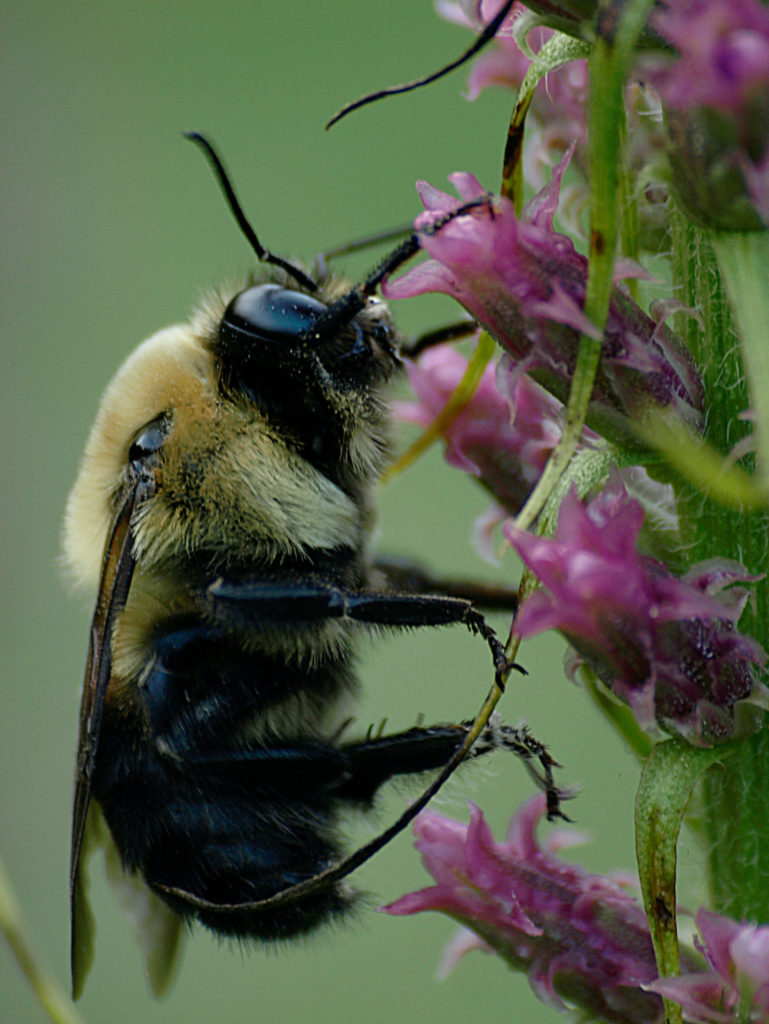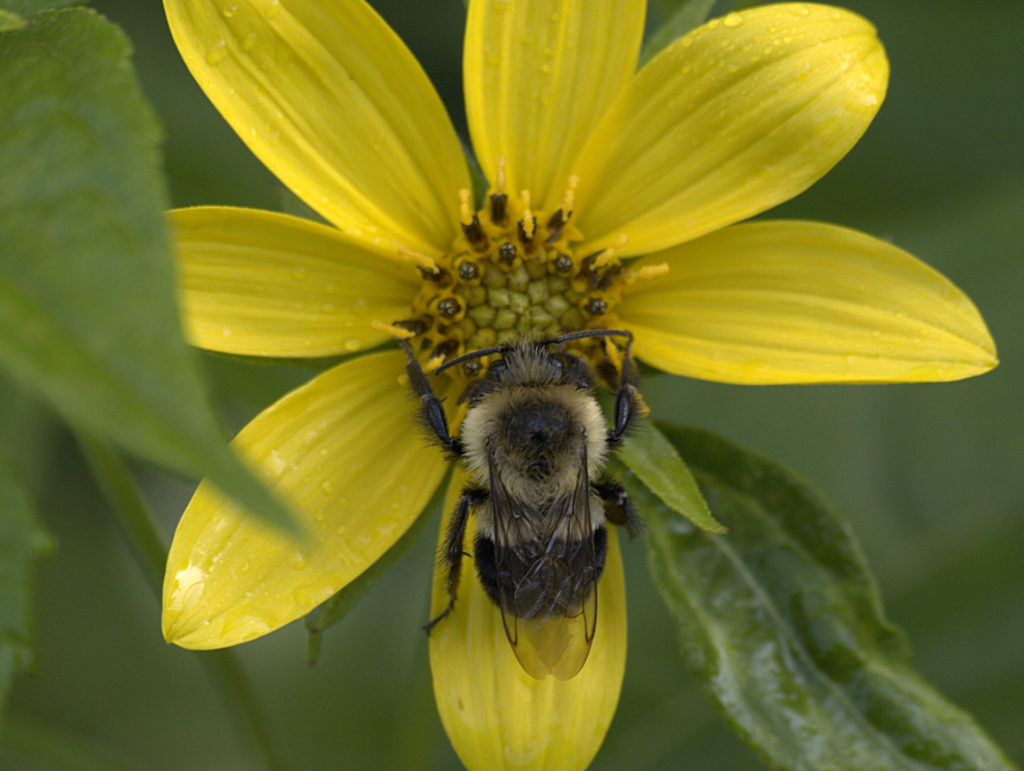Featuring special guest, Countryside 2020 Farm Intern Becca!
Throughout the summer months, you may notice the buzzing of bees, the colorful flutter of butterflies, and even the quick red flash of the Ruby-Throated Hummingbird. These animals all play a crucial role in the pollination of plants, transferring pollen grains from the male anther part of the flower to the female stigma, and helping to produce offspring for the next generation of flowers.
Animal pollination is key to the production of most fruits and vegetables. We wanted to learn more about the role pollinators play within the farms of Cuyahoga Valley National Park, so we reached out to our friends at Countryside, a fellow nonprofit park partner that works alongside CVNP to preserve and protect the rural landscape of Cuyahoga Valley. You may be familiar with their farmers markets at Howe Meadow, Highland Square, and Old Trail School.
Check out our interview below with Becca, Countryside’s 2020 farm intern, to learn all about the importance of pollinators from Countryside farms to your own yard!

Which pollinators do farmers try to attract to the farms? What do they do to attract them?
The most important pollinators at any farm are honey bees, which are known to pollinate more than 100 crop species. However, honey bees are a non-native species. They were introduced in the 1600s from Europe to help with honey production. There are plenty of native bees, too, that pollinate a variety of vegetables. Most notably, the bumble bee, who is great at pollinating tomatoes!
It is mostly what farmers don’t do that attracts and maintains healthy honey and bumble bee populations, and other types of pollinators: following no spray or minimal application practices. Pesticides, herbicides and conventional fertilizers directly impact the air, soil and water on the farm and surrounding ecosystem, affecting every link in the food chain.
Conversely, farmers can also attract pollinators by incorporating native wildflowers like purple coneflower, black-eyed susan, milkweed or ironweed, either within or adjacent to their crop rows. They can also plant garden flowers like zinnia, calendula, snapdragon or nasturtium.

Why are pollinators important?
Simply put, do you enjoy strawberries? Sugar snap peas? Even chocolate? If so, thank a pollinator! 90% of the world’s nutrition is a direct result of pollinators changing a flower into fruit…magic! Without them, we’d have a bland, boring, and nutrient-depleted diet!
Stepping back from food production, pollinators are important because they are essential components in the functioning of entire ecosystems; they transform flowers into food for other wildlife or are food themselves, bolstering the food web.

What should we do to try and attract pollinators at home?
This is a great and one that deserves everyone’s attention! Your job as a property owner, apartment balcony-basker or community space enthusiast is to reclaim ecosystem-centric space for our wildlife neighbors. How do you do this?
1. Have Fifty Percent Less Lawn
Manicured Kentucky blue grass is an ecological dead zone. Insects, including caterpillars and pollinators all the way up the food chain, need native plants to eat! If you have a balcony, offer up more than concrete! Grow herbs, flowers or even try container gardening!
2. Think Critically About Pesticides
Think critically about the quantity and quality of pesticide, herbicide and fertilizer you are applying to your property. Americans overdo it and that not only affects local wildlife but leads to many water quality issues, too.
3. Research Native Plant Species Appropriate for Your Area
Trees, shrubs, grasses and wildflowers will do! Native plants have adapted to our climate, are part of the larger ecosystem and require far less maintenance than non-native nursery favorites.
Check out these resources:
audubon.org
nwf.org
wildflower.org
4. Replace Non-Native Plants
Start replacing your non-native plants with their more sustainable, ecologically essential and often more beautiful native alternatives and watch wildlife reclaim their space!

We loved catching up with Becca and learning more about what they’re doing—and what we can do—to improve spaces for wildlife and plants. Countryside Farmers’ Market at Howe Meadow continues to provide local shopping from farmers and food entrepreneurs (thanks to pollinators!) every Saturday from 9 a.m. to noon. Operations are modified to adapt to COVID guidelines—read here for more information.
The Conservancy is a nonprofit friends group for Cuyahoga Valley National Park. Our goals are to improve visitor experiences, and provide meaningful, life-enhancing programs to our communities. If you would like to join us in protecting the Cuyahoga Valley National Park, please consider supporting your park today.





